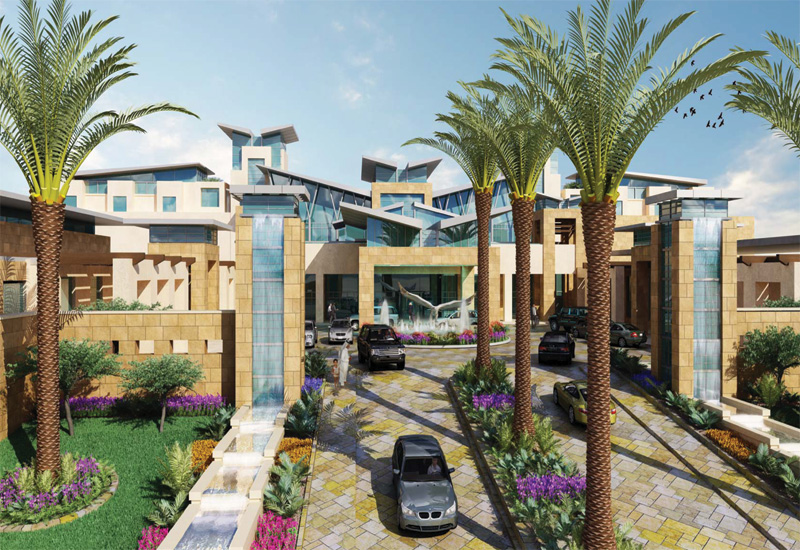 Rendering of The Westin Hotel & Spa (Abu Dhabi): Westin will make its debut in the emirate this year, marking yet further expansion for the brand.
Rendering of The Westin Hotel & Spa (Abu Dhabi): Westin will make its debut in the emirate this year, marking yet further expansion for the brand.
Global synergies
Certainly Starwood as a group is claiming brighter days ahead, with recent full year results for 2010 showing occupancy up in all regions and positive rises in average daily rate across the board, with CEO Frits van Paasschen reporting robust revPAR growth translating higher revenues in to higher profits.
He said that Starwood was well-positioned to capitalise on the rapid growth in emerging markets, a trend that is set to propel business through the doors of many of its Middle East properties too.
With more than 1040 hotels, the group now operates just under half of these in North America (551) and the focus for immediate growth is firmly set on Asia and, to a lesser extent, the Middle East.

| Advertisement |
Around 80 new hotels are expected to join Starwood in 2011 following the launch of 72 new properties last year plus a further 96 signed management contracts — more than two-thirds of openings are expected to be outside of North America with 60% in the luxury and upper upscale segment.
“India and China are booming — we have 65 hotels in China and 85 planned to give us around 150 by 2015, while we are doubling our presence in India,” said de Wilde.
“In both these markets, there is a rise in the middle classes that will impact on the travel industry with 400 million people having the means to travel soon.
“While not all these are coming to the Middle East, a large proportion will travel via the region, either through Dubai or Doha, Abu Dhabi or even other destinations and the expansion of airlines here is helping to make this region one of the fastest expanding markets globally.”
Confident that the current trend is just the tip of the iceberg, de Wilde extrapolated on the benefits: “Travellers that are familiar with our brands are much more likely to make that choice here in the region, and as we roll out brands in China, for instance, it is obviously beneficial to us that they come and stay here with Starwood.”
Adding a fifth dimension, he emphasised the role of the Starwood Preferred Guest (SPG) loyalty scheme that already drives around half of occupancy across the group’s network: “More than 60% of customers in the Middle East are SPG members and in growing our SPG footprint internationally, it will be a major driver of business in future,” claimed de Wilde.
For the moment, a major concern for the Starwood regional office is future development, and here de Wilde rates the Middle East as one of the prime growth areas for Starwood: “It has always been important to us since Sheraton opened its first hotel outside the US in Kuwait in 1966, and in many cities here, we were first movers with Sheraton and later with Le Méridien, when we took over that brand in 2004.
“We see great opportunities for expansion building on our presence and are committed to developing across the region, with five new hotel openings alone within a year,” he said.
As well as the long-awaited reopening of the Sheraton Oman in Q3, Westin will make its brand debut in Abu Dhabi this year, while St Regis will flood the market with three launches — in Sa’adiyat Island, Doha and Abu Dhabi city early in 2012.
“In addition, we will open the residence tower of the Grosvenor House in Dubai with 300 additional units, and have another 25 hotels in the pipeline which adds up to nearly 50% growth on our current 47 properties,” said de Wilde.
“We believe that over the next four to five years, we will operate more than 75 hotels here and will be the first region outside of the US to offer all nine Starwood brands — but our focus will be on growing the brand footprint,” he added. “While we are strong with Sheraton and Le Méridien, there are lots of areas where we can introduce other Starwood brands.”
Key to this development has been the identifying of new trends in travel and travellers, an arena in which Starwood has demonstrated its on-note credentials with the roll-out of new brands to address new customer demands.
“Technology linked with the hotel experience will be key given the increased connectivity of most people,” said de Wilde. “In addition, the rise of the middle classes cannot be understated in the global context since 70% of population growth is in less developed markets and the Gulf is an ideal hub as mentioned.
“The other major trends are the advent of the Generation Y traveller, and CSR and sustainability, with the latter driven by initiatives that make money and do not compromise the guest experience.”
For Generation Y, expected to take over from baby boomers as the dominant force in travel, Starwood has developed new brands such as Aloft and W, which promise innovative design, up-to-date technology and something different.
“We also see consumers increasingly choosing brands that fulfil their sense of purpose, and it is no longer an option to toy with CSR,” said de Wilde. “At Starwood, we have a commitment to reduce energy consumption by 30% and water usage by 20% by 2020, plus a lot of on-property initiatives enabling us to leverage best practices around the globe.”
With Element acting as a laboratory for green practices as well as offering an extended-stay option, potential for this brand is strong, he said: “Element could go in practically every city here — we had many developers interested in the past two years offering projects with a residential component that they wanted to place under a Starwood brand.
“However, it is difficult to implement brand standards in existing properties and we prefer to look for new developments.”
More core brand properties; growth potential for Four Points and Aloft; expansion of the luxury and extended stay segments, and the sexy option of W Hotel all adds up to a royal flush for Starwood in the Middle East with its extensive brand portfolio.
And, for de Wilde, it’s very much a case of the right time and right place to shape future expansion.
“The dynamics of the Middle East have not changed much since I arrived six years’ ago — it is fast moving, challenging often but becoming a benchmark region for our industry,” he said. “This forward thinking means it is a good place to be with new supply and new F&B concepts, as well as a multi-cultural dimension.”
More cost conscious and leaner in operations following the crisis, the region’s hospitality sector demonstrates the qualifications for continued growth, but de Wilde sounded one note of caution in the area of HR — particularly given moves to mandate up to 85% local employment in countries such as Oman.
“While the region is attractive for (expatriate) staff, we have to take responsibility for attracting more locals to the sector — as hoteliers, we need to show them how powerful the industry is and the potential for development.”








 Search our database of more than 2,700 industry companies
Search our database of more than 2,700 industry companies









